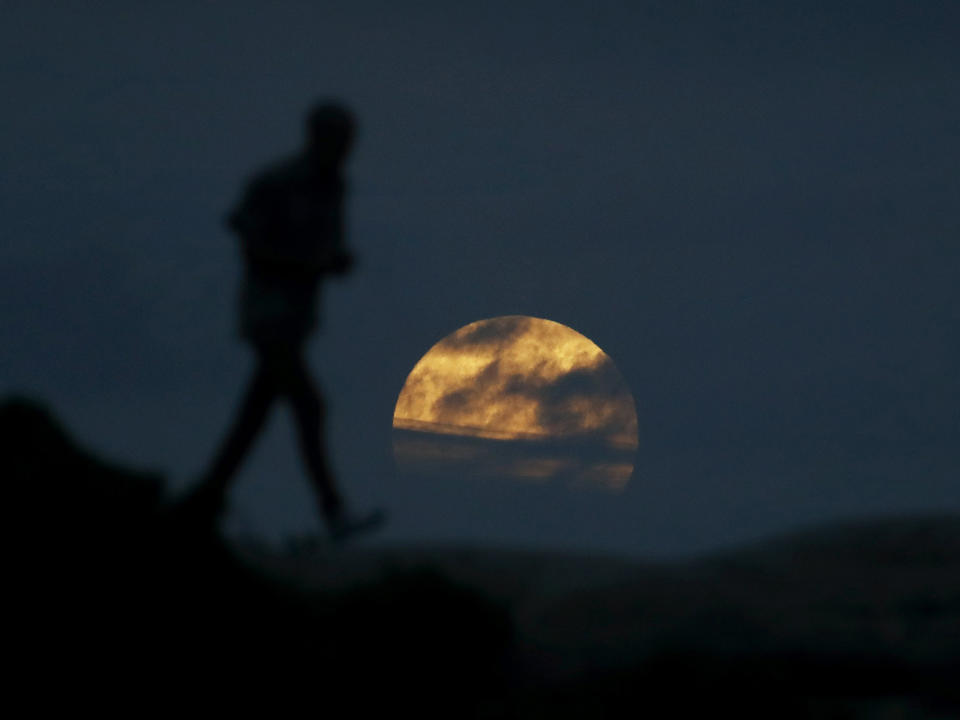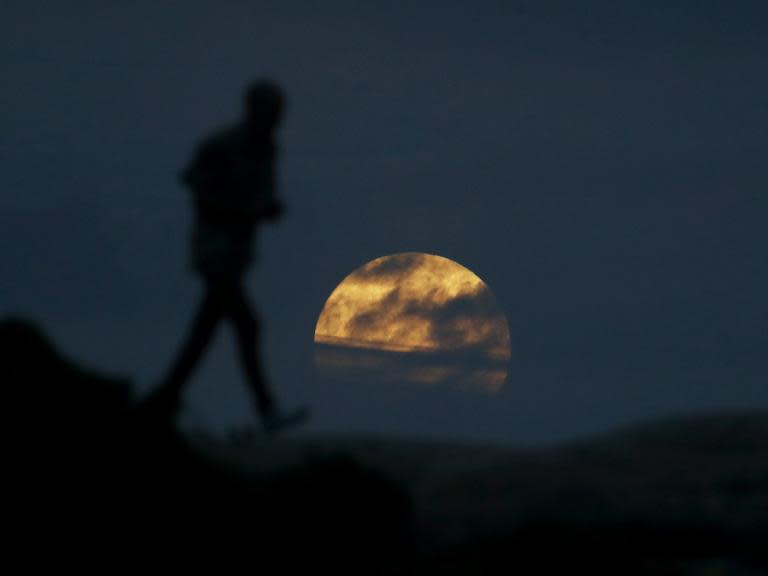Super blue blood moon: Lunar eclipse arrives over the US and Australia
The much anticipated "blood moon" has arrived over the US and Australia.
The phenomenon – really just a fancy word for a lunar eclipse – is the third part of the "super blue blood moon" or purple eclipse that has been seen over the world today. It takes its name from the deep red colour that is cast over the moon by the light from the sun as it moves past the Earth.
The supermoon has been visible since last night, and refers to times when the moon moves closer to the Earth and so appears bigger and brighter than usual. The blue moon isn't actually visible at all – it refers to times where there are two full moons in one month.
Nasa has been excitedly promoting the collision of the three lunar events as a celestial trifecta. And it will be doing scientific work during – the moon's surface gets so cold that it can be useful for studying how the rocks that are there react.
“During a lunar eclipse, the temperature swing is so dramatic that it’s as if the surface of the Moon goes from being in an oven to being in a freezer in just a few hours,” said Noah Petro, deputy project scientist for NASA’s Lunar Reconnaissance Orbiter, or LRO, at Goddard Space Flight Center in Greenbelt, Maryland.
That quick cooling means we'll get to see some features of the moon that normally we wouldn't get a look at.
“The whole character of the Moon changes when we observe with a thermal camera during an eclipse,” said Paul Hayne of the Laboratory for Atmospheric and Space Physics at the University of Colorado Boulder. “In the dark, many familiar craters and other features can’t be seen, and the normally non-descript areas around some craters start to 'glow,' because the rocks there are still warm.”
But other scientists cautioned against getting too excited about some of the more dramatic names for the events.
“The Super Blue Blood Moon is a lunar eclipse that happens on the second full moon of the month," said Dr Daniel Brown, an astronomy expert at Nottingham Trent University. "It also happens to be during the Moon’s closest approach, being within ten percent of the nearest to Earth it can ever be.
“The term blood moon is actually quite misleading. The Moon will become much darker and take on an ash-grey colour – there will be no extensive red colour. Calling it a blood moon is rather exaggerated; only after large volcanic eruptions would we expect a rusty red colour, which will not be the case this time."

 Yahoo News
Yahoo News 

